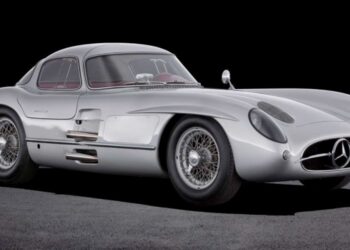The automotive industry continues to be a force of innovation on the global stage. In particular, its use of virtual reality. Companies such as the Ford Motor Company and Tesla are developing virtual reality training tools to enhance their technology and their staff’s skills. Audi improved the safety of their new car designs in the manufacturing stage through virtual reality testing. Volkswagen is also using VR for virtual prototyping, saving thousands on design costs. These applications have changed the industry for the better.
What is virtual reality?
Virtual reality is the utilization of computer-generated 3D surroundings and objects in a virtual space. This is normally performed using a head-mounted display. While it was formerly thought to be a fad for video games, it is now gaining traction as a legitimate strategy to level up your business.
Brief history of VR
To truly understand how VR changed the automotive industry, we need to understand how it began. The first instance of electronic virtual reality was developed by computer artist David Em. Although rudimentary VR environments existed before then, it was David Em who made one that was navigable. A far cry from the charmingly primitive “Sensorama” invention by Morton Heilig. The Sensorama was simply a screen that shoved the user into a booth with a small screen in front of them. David Em’s virtual worlds were developed for NASA’s Jet Propulsion Laboratory. This advancement also helped a whole host of engineers to create their versions.
Interestingly enough, the term virtual reality wouldn’t enter public consciousness until Jaron Lanier found the company “VPL Research”. Most people know him for helping develop the Power Glove. All of this was not possible on a home computer though, and that made it inaccessible to the layperson. That all changed in 1988 thanks to Autodesk’s innovative technology. It could now be run on a personal computer without much fuss. It was there that the gaming industry took a real interest in the burgeoning new industry. SEGA was at the forefront of these developments in the 90s.
State of modern VR
Unfortunately, the technology at the time wasn’t enough to generate interest in investments. For a long period in the 2000s, VR technology remained in limbo. Finally, the stagnancy was changed by the Oculus Rift’s release in 2010. Developed by Palmer Luckey and later along with John Carmack, the VR technology started to escape its long stagnancy in the market. All of these strides led Facebook (now known as Meta) to acquire the Oculus company for $3 billion, the biggest profile getting off the VR field in years. Soon, everybody was investing in the VR craze. Sony, Amazon, Apple, Google, and Microsoft all went to work on their own VR pet projects.
VR in the automotive industry
What we have learned from the history of VR are these important facts:
- VR immerses people into a virtual environment.
- It allows people to experience things without the physical component.
- The only space it needs is a room that can fit the platform it is on.
- The software can simulate real-life physics to a certain extent.
These qualities are exactly why the automotive industry took an interest. The earliest adopters were the engineers at Mercedes. Many automotive industries have been using software to develop blueprints. However, Mercedes (partnered with Microsoft) was among the first to use VR during these prototype developments.
Technical support
Mercedes uses a technology they call “Virtual Remote Support” to enhance their customer support. By giving VR goggles to their branch specialists, people can collaborate in real-time with 3D attachments. For example, if a car engine has issues, an engineer could send the part to them and show exactly where the problem may be. It also has great use as a training tool for new specialists. No physical assets are lost if the repair is done virtually first.
Showrooms
This is where virtual showrooms started popping up. Through 3D-generated images or graphics, these showrooms allowed people to look at cars from the safety of their homes. Some advanced showrooms even let people “enter the car” and give the interior a look. For particularly fun ones, they even get to drive the cars they want to buy. Showrooms are essentially virtual stores for customers to shop in. This means you now have a global pseudo-branch that can be accessed from anywhere at any time.
Prototypes
Prototypes are an expensive investment. They cost time and physical resources to make, and may not even work. Virtual prototypes solve many of those problems. In a virtual reality setting, engineers create car parts and simulate how they would perform in a live environment. While by no means perfect, virtual reality significantly lowers the risks of developing new technology. Minimizing the margins for error in the virtual space translates well into real-life use. It also has the secondary benefit of being wanted by other companies.




































































































































































































